Nothing is quite better than pain au chocolat, croissant dough and bittersweet chocolate, Sydney used to adore them. When Sydney was in middle school, science and math were her nemesis; I knew if she could see how she uses math and science everyday she would conquer both. Science is the basis to every baking recipe, and math is how to figure the quantities of measurement; I would bring her into the kitchen after school and allow her to choose a pastry to create for her to share with her friends at school. One afternoon she choose pains au chocolate, she knew it would be at least two days till the pastry would be ready for her friends.
We took the yeast from the refrigerator (we prefer to use fresh yeast, dry works well too), heated the milk, and added a teaspoon of sugar to create a poolish.
Anyone who has every prepared their own pâte à croissant, croissant dough, knows it is a two day processes consisting of science and math; however when Sydney’s science teacher called at 8:30 am the 30 minutes after I dropped her off the croissant dough was the furthest thing from my mind. He was wondering if the class could participate in our pains au chocolate, her class only had 10 students (she was blessed to attend a small middle school). I explained Sydney and I had already began, but if the school would allow us to use their kitchen we could start another batch there. Sydney’s pain au chocolat turned into a science experiment.
Pain au Chocolat:
Flour for dusting
Bâtons of bittersweet chocolate
1 egg
1-Tablespoon water
Pearl sugar, optional
Prepare the croissant dough the day ahead and place in the refrigerator.
Prepare your mise en place. Cut the chocolate batons 1.3 cm/ 1/2 –inch wide and 7.5 cm/ 3-inches long or you can purchase prepared batons.
Remove the dough from the refrigerator, flour your work surface, roll the détrempe to 41 x61/ 16 x24- inch rectangle about 6mm/ ¼-inch thick.
Using a pastry wheel cut the dough into 24 squares. Trim off the ends to expose the layers. If using a pizza cutter, cut the dough lengthwise in half ( you should now have 2 rectangles 24 x 6 inches long). Cut each of the rectangles crosswise into 4-inch pieces, you will now have 4 –inch squares. Brush off all the flour.
(If the butter looks hard on the dough, gently tap with rolling pin to soften.)
Using a pastry brush lightly coat one of the long sides of the dough with some of the egg wash. Reserve the remaining egg wash.
Arrange a row of the bâtons, the dough squares, and shape one at a time keeping the waiting dough covered. Lay one of the batons on the side of the dough that has not been egg washed. Starting from the chocolate side roll the dough so that it is incasing the baton, then add another baton along the seam. Take care to be neat, definite, but slightly loose. DO NOT STRTCH THE DOUGH. Begin to roll the dough to meet with the egg wash end. Moisten the end of the dough with a little bit of water to seal and place seam side down on a lined baking sheet leaving adequate room between the squares. While shaping your Pains au Chocolat, keep the squares of détrempe covered with plastic wrap.
Once all the pains are formed brush with egg wash and sprinkle with pearl sugar. Cover with plastic wrap and proof for 1 hour.
Preheat your oven to 200 degrees C. /400 degrees F. for 20 minutes prior to baking, five minutes prior to actually baking place a glass baking dish with about 1 to 2- inches of water in the oven, on the bottom rack.
Place the pains in the oven and reduce the heat to 180 degrees C./ 350 degrees F. Bake for about 20- 25 minutes, turning the baking sheets ½ way during the baking time.
Remove from the oven, transfer to a cooling rack and cool for about 10 minutes. Pains au Chocolate are best eaten immediately.
The Pain au Chocolat experiment was a huge success!


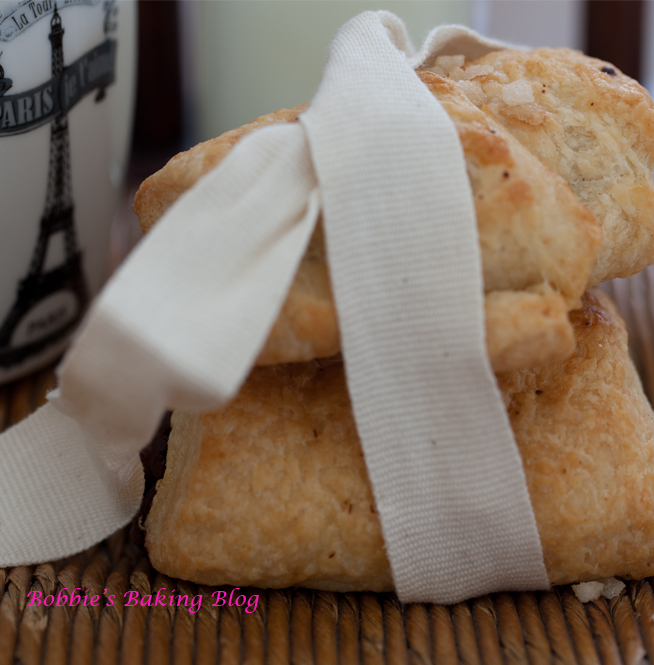
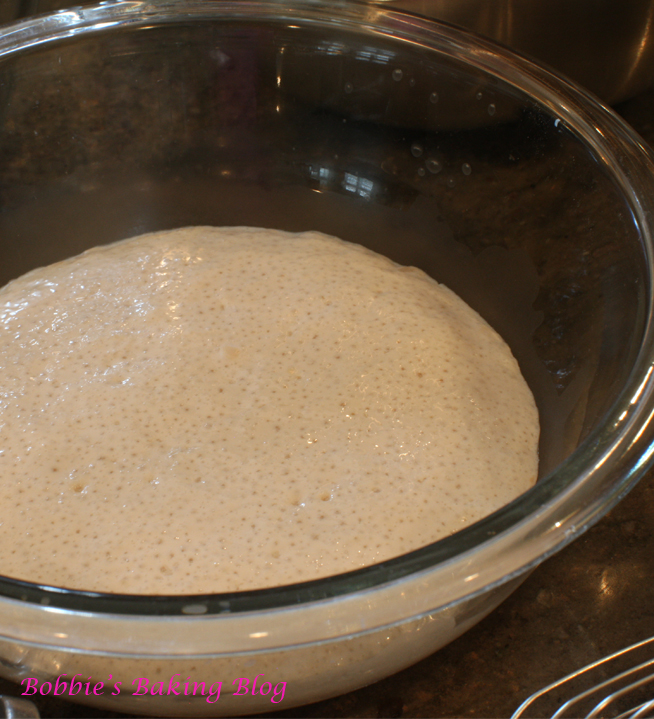
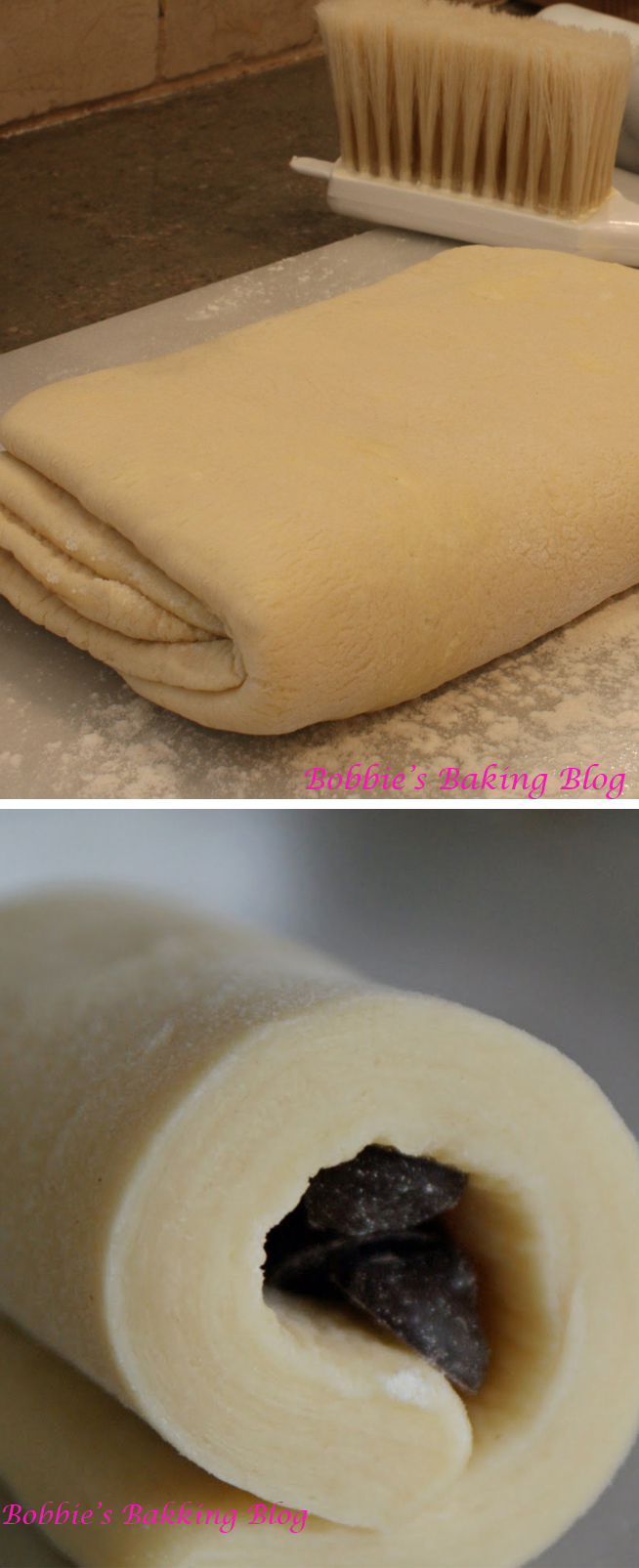
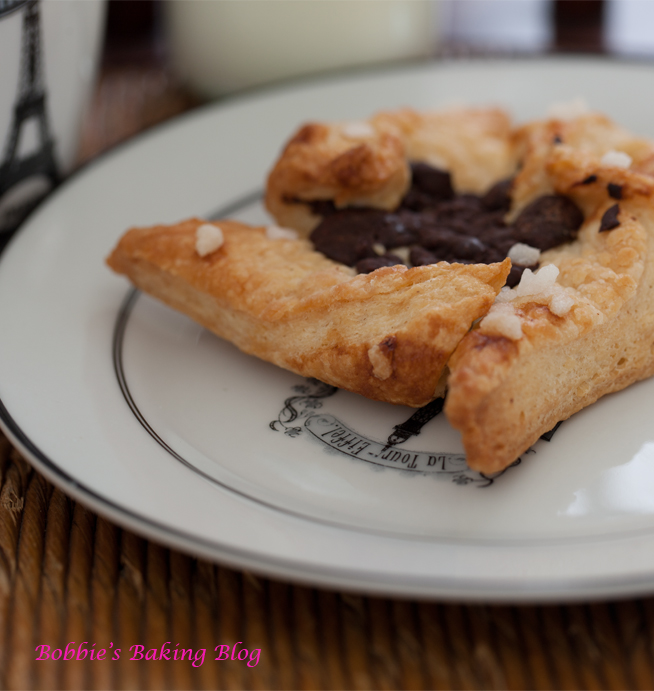
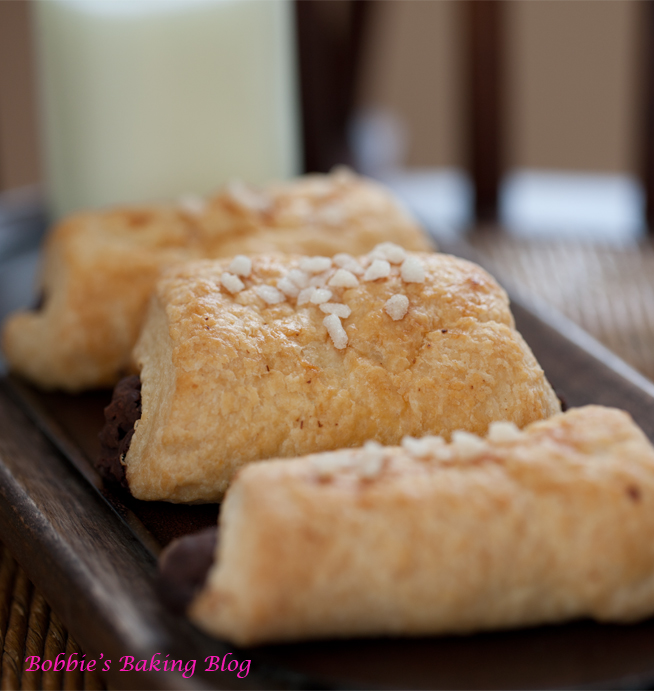








Greetings! I would just like to express my gratitude for the superb info contained in this post. I will be coming back to your site for some more cool information soon.
This really is an excellent post. Your recipe instructions are clear and concise. The pictures are just stunning and the pastry recipe is a real keeper. Well done!
Harika gorunuyor sayfanizda cok guzel tarifler var
Paylasiminiz icin tesekkurler
Sevgiler
teşekkür ederim